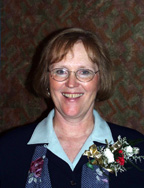Researchers at the UNMC College of Nursing have received a $100,000 grant from the American Heart Association to conduct a preliminary study to determine whether home-based cardiac rehabilitation is an effective alternative to traditional cardiac rehabilitation.
UNMC researchers will study 50 Omaha-area study participants, age 40- to 80-years-old, who have had a heart attack or coronary artery bypass. The clinical site for the study will be Nebraska Health System (NHS).
Though more than 12 million patients with coronary heart disease need medically supervised cardiac rehabilitation, about 65 percent of Nebraskans (national figure is about 10 to 20 percent) are referred to cardiac rehabilitation following hospital discharge for heart attack or coronary artery bypass graft (CABG) surgery.
National statistics show about 25 percent of patients drop out of traditional cardiac rehabilitation programs or go back to old habits within the first three months, and 40 to 50 percent between six to 12 months, with little change during the next three to four years.
Barriers to traditional programs include lack of insurance reimbursement, lack of access to a program, lack of motivation, lack of physician referral, lack of spouse support, and perhaps another illness that prevents them from participating.
 The goal of the study, titled, “Testing a Home-Based Program of Cardiac Rehabilitation,” is to obtain information to ultimately evaluate whether home-based cardiac rehabilitation is at least as effective as traditional cardiac rehabilitation.
The goal of the study, titled, “Testing a Home-Based Program of Cardiac Rehabilitation,” is to obtain information to ultimately evaluate whether home-based cardiac rehabilitation is at least as effective as traditional cardiac rehabilitation.
“The content of our home-based cardiac rehabilitation program is the same as a traditional one, but we will give patients the education and resources to enable them to carry out the program more independently at home,” said Bernice Yates, Ph.D., principal investigator of the study and associate professor, UNMC College of Nursing.
“We hope starting patients on an independent home-based rehabilitation program will motivate them earlier in the recovery process to assume greater responsibility for making lifestyle changes which will, in turn, help make it a lifelong habit,” Dr. Yates said. “A home-based program also is potentially a more convenient and less expensive method of delivering services that may be an alternative for patients who cannot afford services or are unable to participate because of work schedules and other barriers.”
Cardiac rehabilitation is recognized in the health-care community as a well-established and safe way to reduce the risk of a second heart attack, as well as reduce health-care costs. It has been found to improve function and quality of life, and reduce disease and death associated with cardiovascular disease.
During a typical traditional eight-week cardiac rehabilitation program, patients attend an outpatient program in a group setting three times a week to exercise and learn how to lower their risk of a second heart attack through exercise, diet, quitting smoking, and lowering cholesterol and other harmful blood fats. However, when a rehabilitation program concludes after eight weeks, many people go back to their old habits, Dr. Yates said.
“We believe other tested methods of delivering effective cardiac rehabilitation are needed that reach more patients and keep people motivated to improve their health,” she said.
In the home-based approach, researchers will begin by teaching participants the skills they will need to do cardiac rehabilitation in their home, at their own convenience. Researchers will collect data from participants on functional capacity, exercise, diet, smoking, lipid medication and quality of life at various stages of the study.
The information ultimately will reveal data about the effectiveness of an alternate method of delivering cardiac rehabilitation service and guidelines to prevent heart disease.
Like a traditional program, the home-based program will be formally finished after eight weeks, however, researchers will continue to follow the study participants for another three months to see if they maintain their new lifestyle habits. Relapse prevention is another aspect being evaluated in the home-based study.
“If individuals can have these little successes, hopefully they will become lasting successes and become part of their lifestyle,” Dr. Yates said. “We’ll show them the improvements they make in exercise capacity and lowering cholesterol, so they will get a boost that we hope will help prevent relapse.
“Although drop-out rates can be as high as 50 percent at six months, we are anticipating a lower drop-out rate because of the encouragement, regular follow-up, and incentives that will be provided to subjects to remain in the study,” she said.
Coronary heart disease is responsible for more activity limitations than any other disease, according to the American Heart Association. People over 65 years of age account for 55 percent of all heart attacks and 50 percent of coronary artery bypass graft (CABG) surgeries in the United States.
The multidisciplinary research team will be made up of a nurse, exercise specialist, dietitian, nurse practitioner, a physician and biostatistician. Co-investigators of the study are UNMC faculty, Jan Atwood, Ph.D., Scott Shurmur, M.D., and Julie Stoner, Ph.D., Kaye Stanek-Krogstrand, Ph.D., University of Nebraska at Omaha, and consultants, Mark Williams, Ph.D., Creighton University and Nancy Houston Miller, Stanford Medical Center.